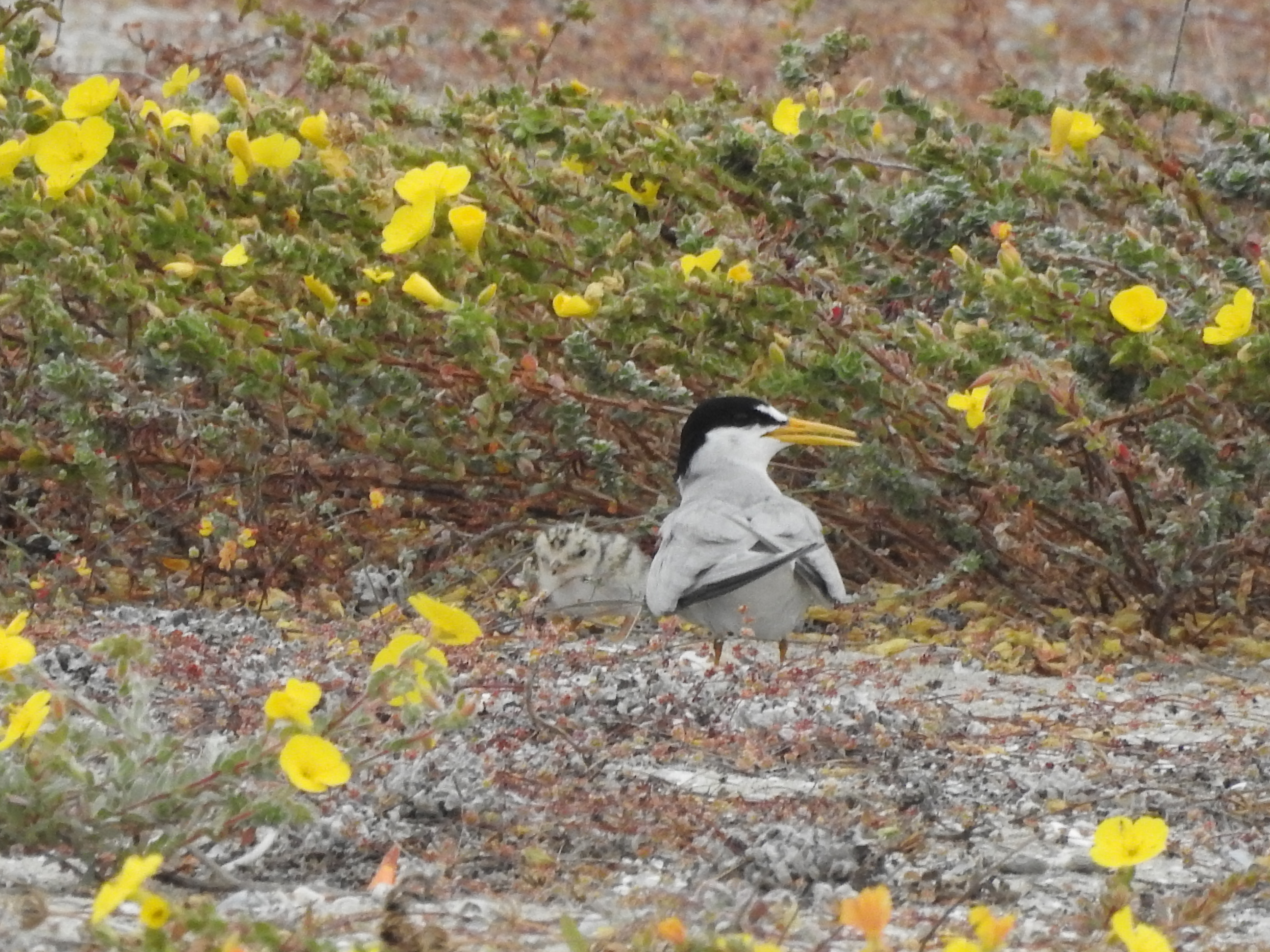Adaptive Management of Coastal Sand Dunes in Mission Bay to Benefit Native Plants and the CA Least Tern
San Diego Bird Alliance (formerly San Diego Audubon Society) has been leading efforts to restore coastal sand dunes in Mission Bay for decades, largely focused on supporting nesting California Least Terns (Sternula antillarum browni), and rare and endangered sand dune plants such as Nuttall's Lotus (Acmispon prostratus) and Coast Wooly Head (Nemacaulis denudata). The primary threat to these species is the presence of fast-growing, nonnative vegetation, which takes up space that Least Terns require for nesting, and outcompetes native dune plants. Volunteer-led hand management of these sites has resulted in a dramatic reduction in invasive cover, and bi-annual vegetation monitoring has revealed that hand management is a more effective strategy in reducing nonnative growth than the more traditional mechanized scraping and broadcast herbicide application strategies. These results are being used to inform year-to-year site management, and to create longterm strategies for managing coastal dunes in Mission Bay. A portion of this project was funded by a SANDAG TransNet EMP Land Management Grant (Contract #5001967, #5004729, and #5005518).
Project Focus
California least tern, cottonheads, Nuttall's acmispon
Cristina Santa Maria
San Diego Association of Governments
San Diego Audubon Society ; San Diego Bird Alliance
City of San Diego; Institute for Ecological Modeling and Management at San Diego State University; Mission Bay Park Rangers; San Diego Management and Monitoring Program
Cristina Santa Maria
Sarah McCutcheon
Kris Preston
Megan Flaherty
California least tern Sternula antillarum browni
Goal: Protect, enhance, and restore California least tern occupied and historically occupied habitat to create resilient, self-sustaining populations that provide for persistence over the long-term (>100 years).
MGT-IMP-IMG STEANT-5
Management units: 1, 7
From 2017-2021, perform routine management activities such as invasives removal, sand replenishment, nest prep, and protecting occurrences from disturbance through fencing, signage, and enforcement.
| Action | Statement | Action status | Projects |
|---|---|---|---|
| IMP-1 | Perform management activities protecting occurrences from disturbance through fencing, signage, and enforcement. | Available for implementation | Adaptive Management of Coastal Sand Dunes in Mission Bay to Benefit Native Plants and the CA Least Tern |
| IMP-2 | Submit project metadata and management data to MSP web portal. | Available for implementation | Adaptive Management of Coastal Sand Dunes in Mission Bay to Benefit Native Plants and the CA Least Tern |
| Criteria | Deadline year |
|---|---|
| Management Completed as Needed Based Upon Monitoring Recommendations | 2021 |
| Threat Name | Threat Code |
|---|---|
| Climate change | CLICHN |
| Herbivory/predation | |
| Human uses of the Preserves | HUMUSE |
| Invasive plants | INVPLA |
| Parasitism/disease | |
| Urban development | URBDEV |
Nuttall's acmispon Acmispon prostratus
Goal: Maintain or enhance existing Nuttall's acmispon occurrences to ensure multiple conserved occurrences with self sustaining populations to increase resilience to environmental and demographic stochasticity, maintain genetic diversity, and ensure persistence over the long term (>100 years) in coastal bluff and coastal dune habitats.
MGT-IMP-IMG ACMPRO-2
Management units: 1, 7
Beginning in 2017, conduct routine management actions identified through the IMG monitoring at Nuttall's acmispon occurrences on Conserved Lands (see occurrence table). Depending on the type and level of threat, management should be conducted as needed, not necessarily every year, and using BMPs with precautions to do no harm.
| Action | Statement | Action status | Projects |
|---|---|---|---|
| IMP-1 | Perform routine management activities such as protecting occurrences from disturbance through fencing and enforcement and controlling invasive non-native plant species =20% absolute cover. | some occurrences are in progress | |
| IMP-2 | Submit project metadata and management data to the MSP Web Portal. | some occurrences are in progress | Adaptive Management of Coastal Sand Dunes in Mission Bay to Benefit Native Plants and the CA Least Tern |
| Criteria | Deadline year |
|---|---|
| Routine Management Completed as Needed Based Upon Monitoring Recommendations | 2021 |
| Threat Name | Threat Code |
|---|---|
| Human uses of the Preserves | HUMUSE |
| Invasive plants | INVPLA |
| Urban development | URBDEV |


